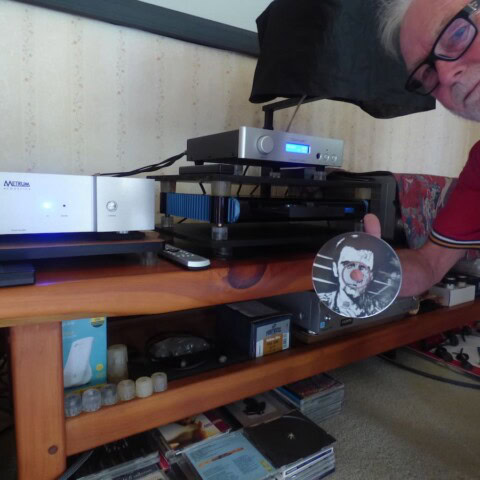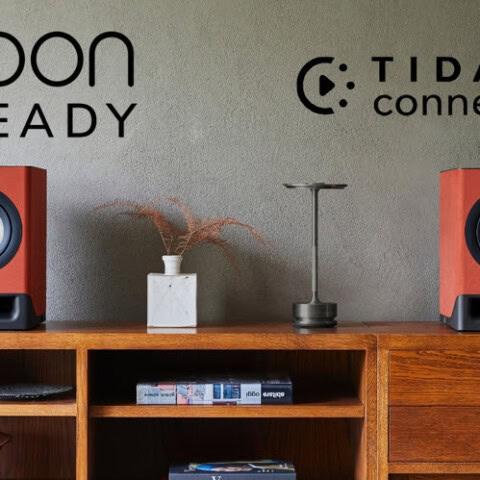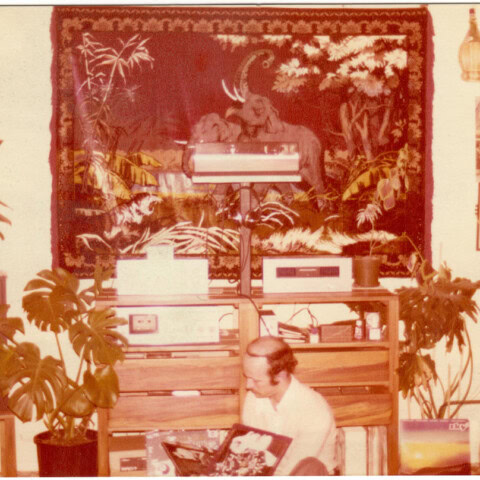GARY STEEL loves the world of music he’s discovered in hi-fi appreciation but hates what its sonic refinement does to many of his favourite records.

I grew up on rock. It’s what really turned me on to music. From the incredible multicoloured rush that was the psychedelic revolution to the dynamic complexities of the progressive rock of the early ‘70s to the sonic experimentation of the post-punk contingent in the late ‘70s, it was rock that fueled my passion for music.
It was never just about rock. I’ve always been a bit of a musical magpie and an adventurer and at various times explored miscellaneous genres including the indigenous music of different cultures, European art music (classical), reggae and funk, blues and jazz and more.
But my teenage hormones demanded noise, anger, sharp dynamics and cool riffs at least once a day. As I’ve grown older and my tastes have become more sophisticated and I’ve become a better listener, I don’t need the rush that rock provides quite as much but I still need a regular dose of it. And I don’t mean rock like Dire Straits; I mean hard rock, with killer riffs!
The problem is that the better my hi-fi system gets the less sonically gratifying those fantastic old records sound. I grew up thinking that the first three Led Zeppelin albums sounded fantastic and Jimmy Page was a production genius for getting such wild contrasts between almost orchestral and acoustic passages and those sledgehammer riffs. I marvelled at the sheer heaviosity of those organ-laced Deep Purple grooves. Later, the Gang Of Four blew my tiny mind – and probably gave me tinnitus – with their unique combination of bass-battering patterns and spine-tingling shards of treble-heavy guitar.

But now that I’ve got a really decent stereo system I just can’t enjoy those recordings. Rock recordings like those of Led Zep sound okay during the softer passages and those containing acoustic instruments but just die when they build up steam to those big hard rock riffs. When the music is supposed to be peaking with huge, powerful battering rams of electric sound, on my system it’s like the sonic picture actually shrinks and becomes smaller.
It’s not that I always had really bad stereo systems. In my 20s and 30s, I owned a powerful Perreaux amp and a fancy tangential tracking Pioneer turntable with an expensive Japanese cartridge and owned a pair of magnificent ESS loudspeakers with Heil transformers that could just about kill you at high volumes. Those ESS speakers could really rock the house.

In the late ‘90s, I was running an experimental record store and wanted to have the best sound possible. An Auckland hi-fi shop kindly loaned me a pair of very nice looking floor-standers and, well… they just refused to fill up the space. Soon after, a friend who worked for another hi-fi store brought his 15-inch dual concentric Tannoy monitors into my shop, which I powered with my old Perreaux amp. They were phenomenal. Yes, they could sound a bit harsh on the top end on some music, but they were capable of sounding great on a wide variety of music and didn’t seem to do a disservice to any type of music. Admittedly, at the time I was very much into electronic music and they responded very well in that regard.

Over the years I got more and more into hi-fi to the point where I spent some years editing TONE magazine in the early 2000s, and got to experience many fantastic systems (although I never had the cash to buy into the top echelon, sadly). I remember vividly auditioning a lovely pair of speakers with a rock album and the look on the face of my friend. He was even less impressed at the sound of the speakers. Where was the grunt, the immediate gratification? He reckoned his tiny 3-in-1 system was better. I didn’t agree with him at the time but he did have a point. As soon as the music ramped up to a crescendo it kind of shrunk back and sounded smaller.
I remember asking a well-thought-of hi-fi importer at the time whether he knew of any stereo gear that sounded great on both acoustic and electric music, and he reckoned not. Speakers tended to be tuned towards the more sophisticated listening tastes that went with the pretty wood veneers of the speaker cabinets and the pleasant contours. Back then, even subs were commonly frowned upon. Many of the so-called great hi-fi systems I listened to didn’t have anywhere enough low-end for my tastes. I didn’t want to have to spend an eternity listening to fucking Diana Krall records.
Over the years, I have found a few systems that seem to be able to make just about anything sound good, but those are in the $100K-plus bracket.

Recently, I thought I’d found an acceptable compromise in a wicked monster of a power amp that really brought out the rock beast but also dealt with more nuanced and acoustic-oriented music really well. While it didn’t entirely resuscitate those old Zep albums it did sound fantastic on well-engineers and more recent rock albums like Nirvana’s Nevermind or the self-titled Killing Joke album from early this century. Powerful, dynamic: just what the doctor ordered.
But even more recently, I auditioned another really fantastic amp and just had to bite the bullet. What it did to music was a small miracle. On the right recording, it wasn’t just more detail I could hear but I could hear the distinct layering of an overdubbed guitar line or the faint haze of an electronic effect or the precise tonal characteristics of a bass line. I couldn’t believe what I was hearing, and more importantly, what I’d been missing without knowing it!

The new amp has presented me with the same old dilemma, however. On certain recordings, it’s just incredible. On acoustic or even electronic music everything is vivid, detailed, and there’s really nothing lacking: prodigious natural bass, wonderful sound picture and all the rest. But on some old favourites, I’m left thinking: ‘Why am I not enjoying this? Well, it just sounds yuck!’
My assumption is that the problem I’m encountering is the compression rock and pop productions have used throughout the last 50 or so years to make a more powerful statement on cheaper playback systems. The compression Led Zeppelin used on those really powerful, loud passages on their early records boosted the sense of dynamism on a cheap stereo system (I remember hearing ‘Whole Lotta Love’ on the built-in speakers in my old Peugeot and being completely blown away) but the downside is that a really good amplification system and pair of speakers will make the sonic picture actually shrink and sound rather flat.

So, what’s behind this rather bizarre phenomenon? Has anyone else experienced this profound disappointment as part of their hi-fi journey? Is it just that rock records with huge riffs were built to sound good on a stack of Marshall’s or a pair of large Cerwin-Vega speakers rather than a refined hi-fi speaker? Do I really need to have two separate stereo systems in the house; one for records I love but which a really refined system does nothing for, the other for all those high-end audiophile recordings? Or am I destined to spend the rest of my years playing nothing but Dark Side Of The Moon, Dire Straits, Diana Krall and Steely Dan?
















Maybe that’s because many of those recordings were mixed and mastered with the objective of sounding as good as possible on crappy sound systems. Maybe somebody should design a Crapifier DSP box to put those attributes back in circuit – make your low-distortion extended flat frequency-response dynaaic system into a grunter again.
Try different DACs with same amp/speaker set up. My R2R makes even poor recordings sound great but my more high end chip DAC gets more out of well recorded tracks. A higher end R2R might let you have your cake and eat it.